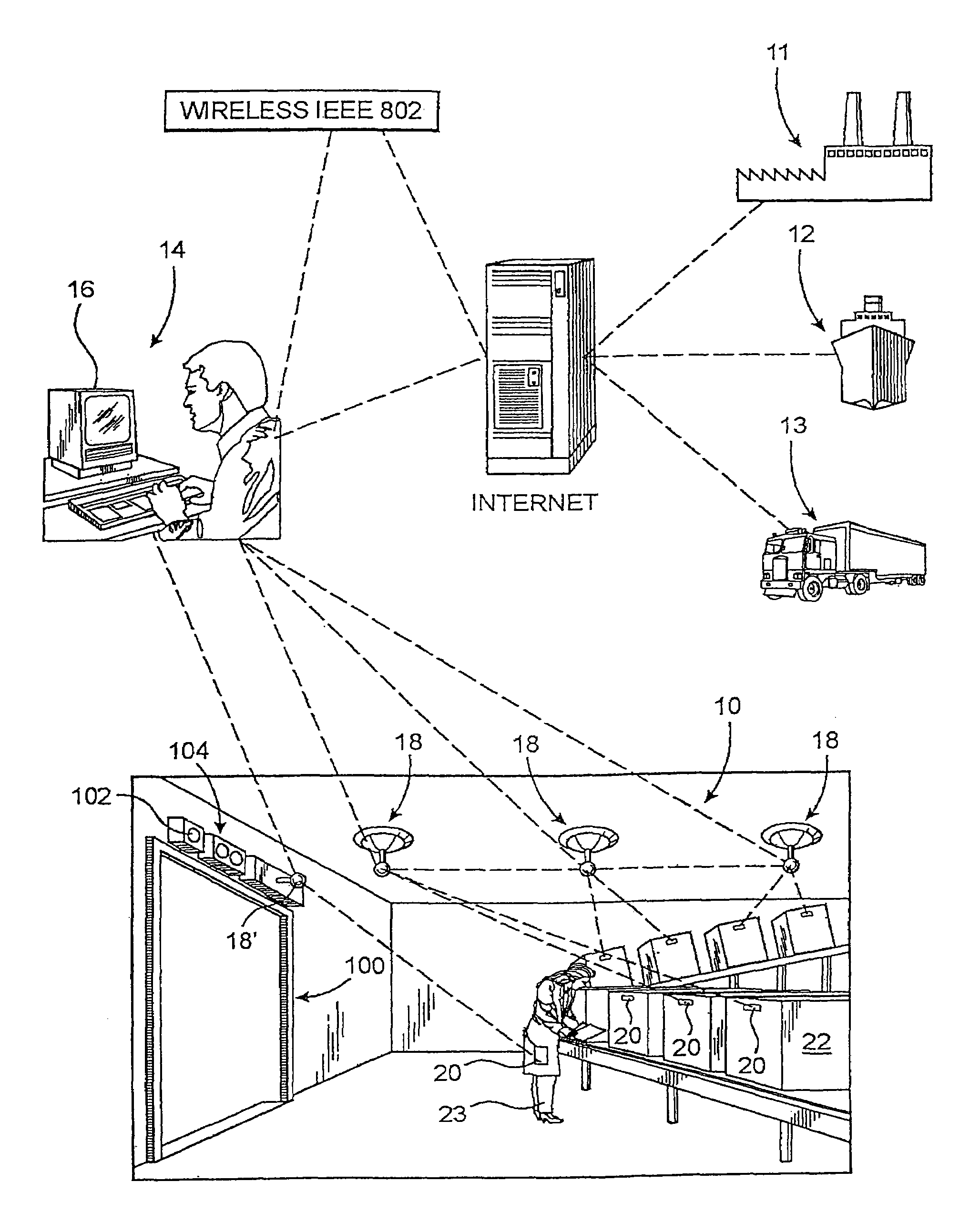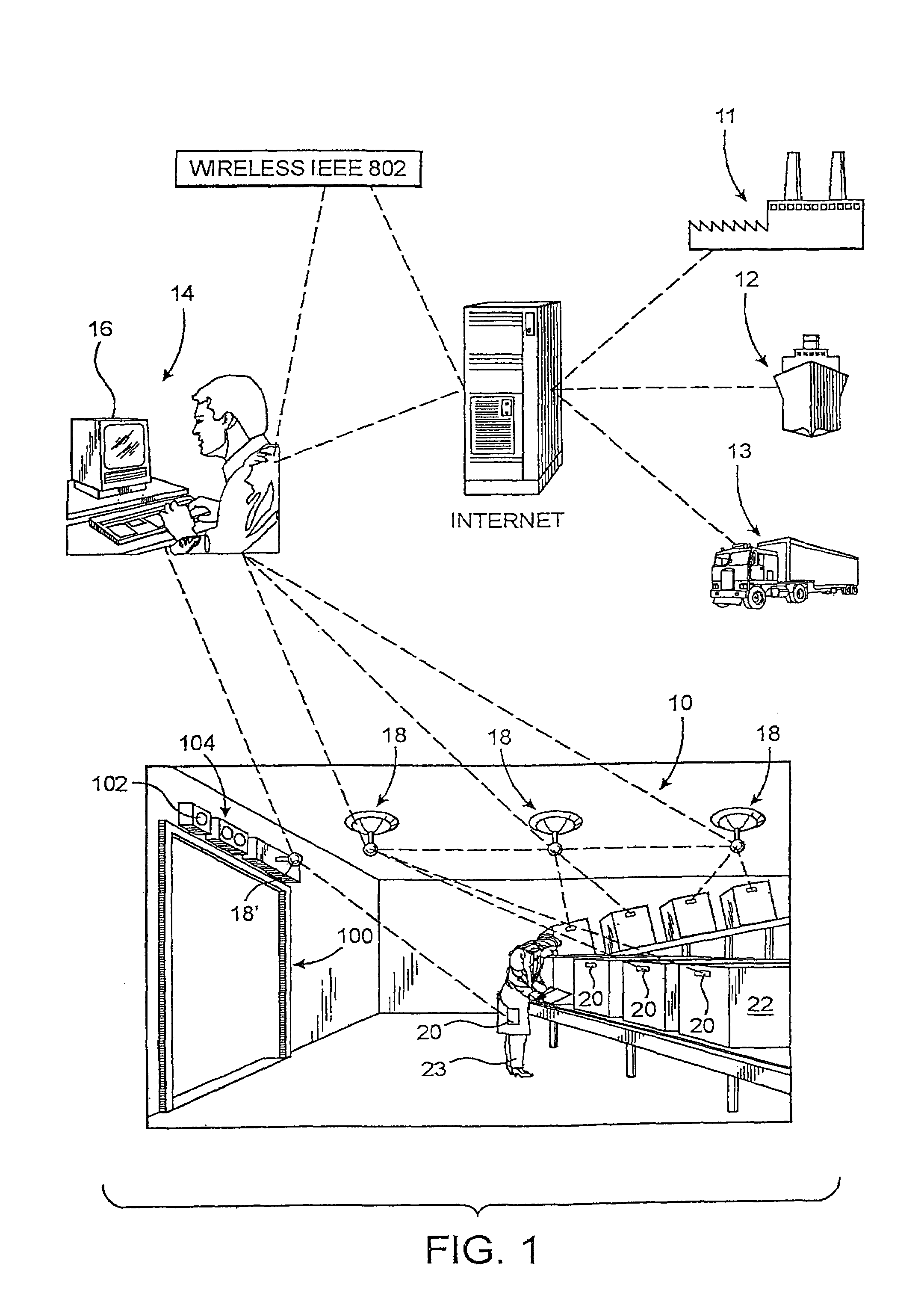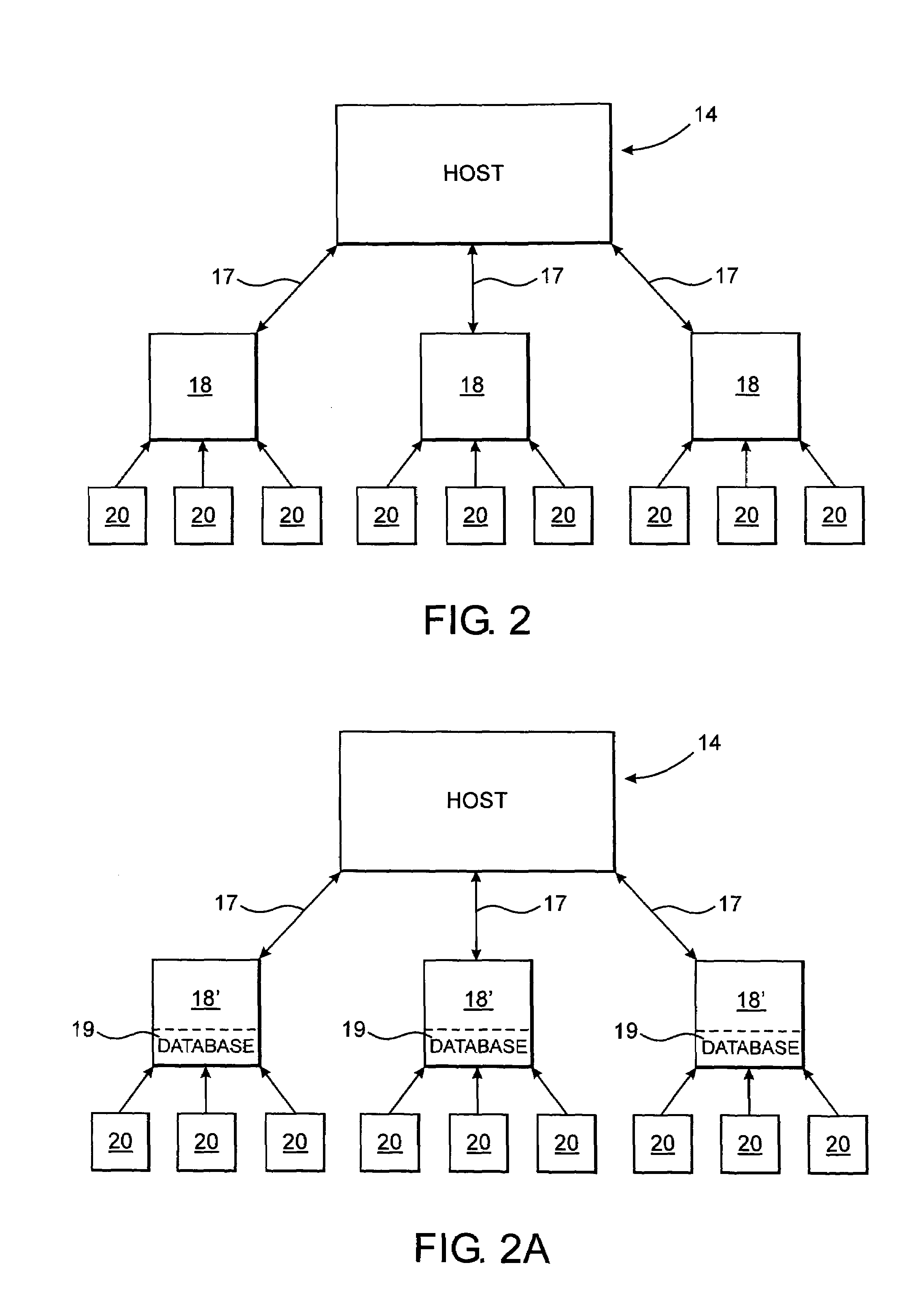[0021]Further, both the passive and active tags may have common operative features such as multi-frequency capabilities wherein the activation or power-up field or
signal is generated at the aforementioned first frequency and communication between the tag and the reader, either in a uni-directional or bi-directional mode, occurs at a second, differing frequency. The existence of the multi-frequency capabilities of the various tags enhances the range or proximity in which communication, activation, power-up, etc, may occur.
[0022]More specifically, FCC regulations prohibit the generation or transmission of pulsed signals, for example between a reader and a tag, except when licensing requirements are met. However FCC regulations do allow for the generation of fields / signals of certain frequencies, having pre-established band parameters, to be transmitted or generated at increased field strengths. Therefore, establishing a
field strength of “unlimited radiated energy” within the frequency parameters specified is permitted. In other words, increased power can be utilized within certain specified frequency ranges, including 13.56 MHz. to increase the range in which the tags of a
monitoring system can be detected, activated, powered-up, etc. without violating FCC regulations. Accordingly, activation signals or the establishment of electric fields for the activation or “wake-up” and / or “power-up” of one or a plurality of RF responsive tags can be accomplished using increased field strengths as long as no
human exposure hazards are involved. Therefore, utilizing the aforementioned first frequency in the frequency range of 13.56 MHz. allows for the activation and / or powering (such as in passive tags) at a much higher
energy level so as to increase the read distance and / or proximity range to at least approximately 12 to 15 feet without violating any regulatory codes. It is emphasized that while the aforementioned first frequency, in the frequency range of 13.56 MHz may be preferred due to the ability to use the higher
energy level and thereby increase the read distance, other frequencies can be utilized to activate or power the tags, wherein such frequency may be in the range of 433 MHz.
[0024]As set forth above, the various embodiments of the present invention may further comprise a
tracking system demonstrating certain control and tracking abilities. More specifically, the reader
assembly may include at least one control reader and / or at least one tracking reader. Accordingly, at least some of the plurality of tags comprising operative components of the
system are associated with a variety of objects or articles, and are specifically mounted on or connected thereto so as to move therewith. Therefore the objects or articles with which the plurality of tags are associated can be effectively tracked on a real time basis. As such, at least one of the aforementioned control readers may be mounted in predetermined relation to at least one, or more practically each, of the entrances / exits associated with the locale being monitored. Further, the control reader may be structured independently or in combination with the host controller to regulate specific observation facilities in order to allow real time viewing and / or recording or certain areas such as, but not limited to the entrance / exits or portals of the monitored locale. Such observation facilities can include cameras, display monitors, recorders and / or other video facilities capable of accomplishing and storing activities or events within a predetermined portion of the locale being monitored.
[0025]Operation and control of the aforementioned observation facilities may further include the monitoring of one or more individuals, products, etc. As such, a reader can find the location of individual tags or a plurality / group of tags and, when located, send a
signal to a correspondingly located camera or other observation facilities so as to monitor or track the one or more tags which have been located, as well as the personnel or products associated therewith. Further, whether or not directly associated with specific observation facilities such as cameras, monitors, etc. the system can also wake-up individual ones or all of a predetermined plurality of tags located within a specific area, such as a meeting room, classroom, seminar area, etc. In doing so, the individuals in attendance at a seminar, class, meeting, etc. can be quickly and effectively established, assuming the attending personnel have an appropriate tag in their possession.
[0027]It should be further noted that the “wake-up” field can be enabled by
motion sensors, optical sensors, and similarly functional operational sensors having appropriate capabilities. Once activated, the one or more tags within the wake-up field will generate the identification or address of the individual tags, plus an appropriate reader address. This information allows operating personnel to identify and determine the location of any one tag or plurality of tags, at the time of wake-up or activation.
 Login to View More
Login to View More  Login to View More
Login to View More 


